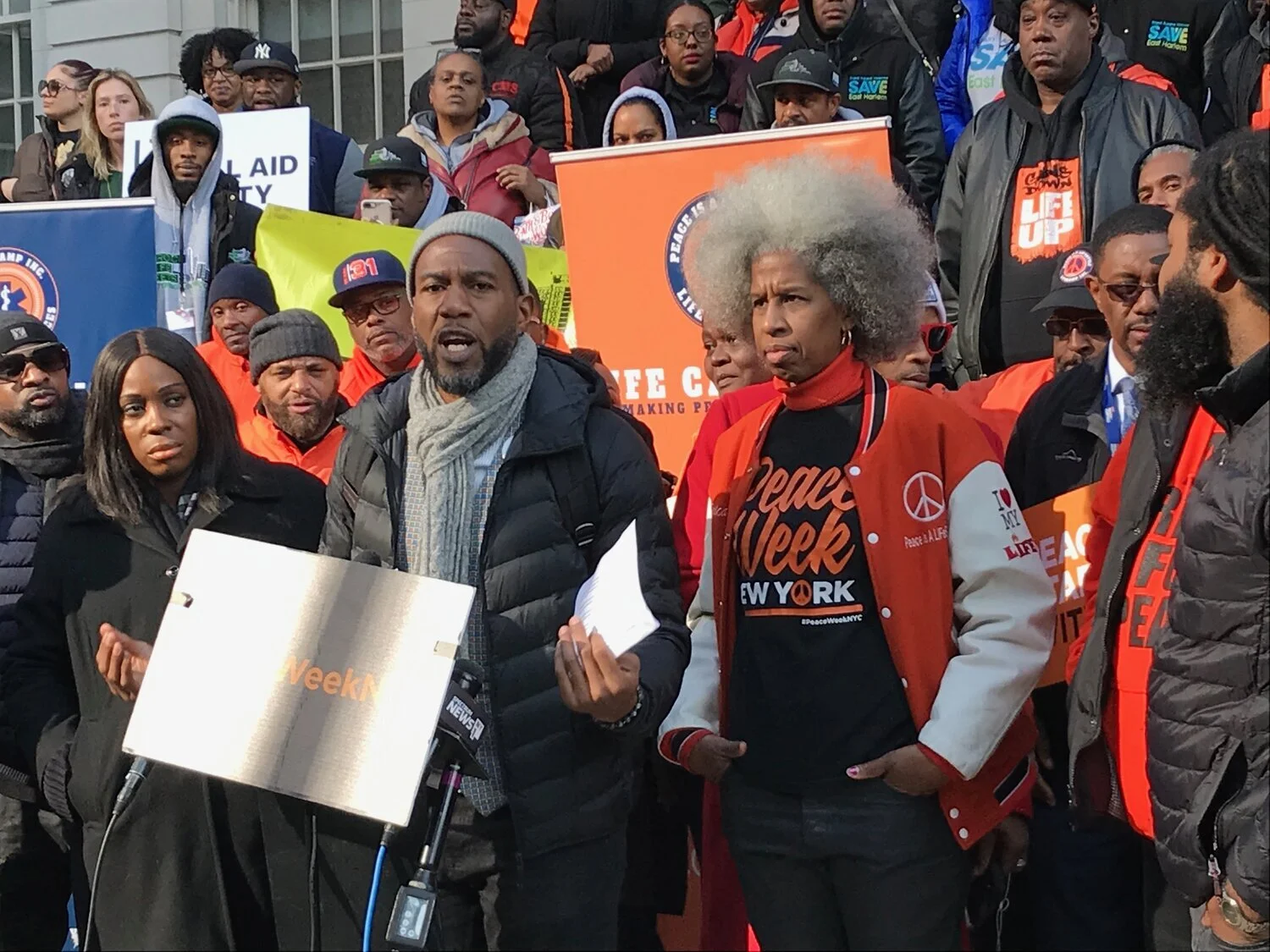NYC expands Cure Violence model in Jamaica amid effort to end over-policing
/Life Camp Inc. founder Erica Ford (right, with Public Advocate Jumaane Williams) joined Mayor Bill de Blasio to announce the expansion of Cure Violence programs in Jamaica and other neighborhoods in New York City on Wednesday. Eagle file photo by David Brand
By David Brand
Facing pressure to fund alternatives to policing in communities of color, Mayor Bill de Blasio on Wednesday announced the expansion of the city’s Cure Violence program in four new neighborhoods, including Jamaica.
The Cure Violence initiative, overseen by the Department of Health, relies on personal connections and early intervention to prevent conflict in neighborhoods with the highest rates of gun violence — all predominantly low-income communities of color. Cure Violence staff, including community members who have been affected by gun violence or street conflicts, known as credible messengers, identify individuals at-risk of becoming perpetrators or victims of violence, conduct outreach and offer services to meet their needs.
The expansion of the program, de Blasio said, “means lives will be saved, period.”
“If we actually invest in people, if we invest in communities, we make a change that’s much, much deeper,” he said. The city will boost overall funding for the Cure Violence program, which will now operate in 20 police precincts, by $10 million.
Queens Cure Violence champions Erica Ford, the CEO of the organization Life Camp Inc. in Southeast Queens, and K. Bain, head of the 696 Build Queensbridge, joined de Blasio to announce the funding and program expansion.
Ford said “generational trauma” and oppression at times manifests in violence among young Black and Latino New Yorkers, particularly in low-income communities. The effort to eliminate patterns of violence demands preemptive services, not reactionary punishment, she said.
“We in the crisis management system throughout New York City, believe it is important to address violence as a public health crisis,” Ford said. “And to address it as a disease and help these young people heal, help their families heal.”
Life Camp Inc. links young people with therapy, education and individually-tailored services, while also providing informal counseling in jails, schools and on the streets.
“We go everywhere where there's a potential for someone to be shot or to shoot someone. And we help people turn their lives around,” she said.
Bain said Cure Violence programs, part of the city’s broader “crisis management system” rely on trusted neighbors and community members with shared experiences.
“We are involved in a human justice initiative where people at the center of the work that we do,” he said. “We are those people that again, are in tune with the community, we believe in people being the voice that's heard.”
The Cure Violence expansion comes as de Blasio faces criticism about the way the NYPD has responded to days of protests over police violence against Black New Yorkers. The protests also focused on city’s long reliance on the police to address issues like safety in schools, acute mental health crises and homelessness. Activists and councilmembers alike have called on the city to “defund the NYPD” — slash the department’s roughly $6 billion budget and divert the money to services that uplift communities.
“Our Cure Violence organizations engage our communities to promote neighborhood resilience and safety. Increasing community-led measures to preemptively cure violence is a step in the right direction,” said Councilmember Adrienne Adams, who attended the announcement Wednesday.
“So, today's announcement is an important step toward moving forward as a city.”




